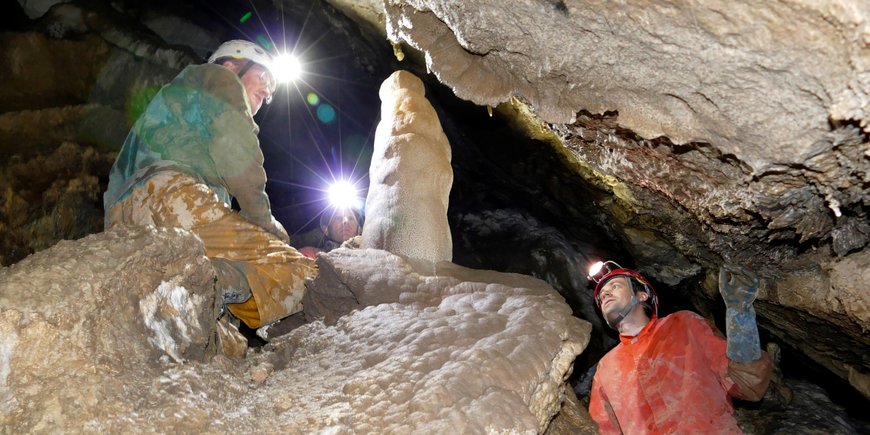In past ice ages, the intensity of summer insolation affected the emergence of warm and cold periods and played an important role in triggering abrupt climate changes, a study by climate researchers, geoscientists, and environmental physicists suggests. Using stalagmites in the European Alps, they were able to demonstrate that warm phases appeared primarily when the summer insolation reached maxima in the Northern Hemisphere. Study participants included scientists from Germany, Austria, and Switzerland led by researchers from Heidelberg University and the GFZ German Research Centre for Geosciences Potsdam. The results were published in the journal “Communications Earth & Environment”.
Past ice ages in the Northern Hemisphere were marked by sudden transitions between cold and warm phases, each lasting several thousand years. The reason for these fluctuations has yet to be resolved, but research does point to effects relating to the size of the continental ice sheets. Greenland ice records 25 such warm-cold cycles between 115,400 and 14,700 years ago. Investigating stalagmites in the Melchsee-Frutt cave system in the Swiss Alps, the researchers were able to investigate for the first time and with high precision 16 such fluctuations in the penultimate glacial period 185,000 to 130,000 years ago.
Stalagmites in caves are crucial archives in climate research and offer clues as to changes in temperature, precipitation, and vegetation cover. “We are able to precisely determine their age and hence analyse the chronological sequence of abrupt ice age climate fluctuations, which we identify using oxygen isotope values,” explains Prof. Dr Norbert Frank of the Institute of Environmental Physics at Heidelberg University. “Our investigations targeted whether, in addition to ice volumes in the Northern Hemisphere, orbitally driven changes in the global distribution of insolation could have influenced the abrupt changes in climate,” states study head Dr Jens Fohlmeister, who earned his doctorate in environmental physics at Heidelberg University and worked at the GFZ German Research Centre for Geosciences Potsdam and the Potsdam Institute for Climate Impact Research during the investigations.
The researchers studied the transitions of warm-cold cycles in the penultimate ice age by analysing the age and oxygen isotope composition of stalagmites from the Melchsee-Frutt cave system. “Based on the newly acquired data, we were able to show that warm phases occurred mainly during the peak phase of summer insolation in the Northern Hemisphere, even when the sea level, which is dependent on the volume of the continental ice sheets, remained close to its minimum during peak glacial periods,” explains Dr Fohlmeister. Model simulations confirmed these findings. In accordance with the research data from the cave system, the simulations predict the frequency as well as the duration of warm phases at the corresponding sea level and existing insolation.
Scientists from the Potsdam Institute for Climate Impact Research, the GFZ German Research Centre for Geosciences Potsdam, Heidelberg University, the University of Innsbruck (Austria), the Swiss Institute for Speleology and Karst Studies, and the Karst and Caves Natural Heritage Foundation Obwalden (Switzerland) participated in the study. The research was funded by the German Research Foundation. The results were published in the journal “Communications Earth & Environment”.
(Adoption of a press release from the Heidelberg University)
Original publication:
J. Fohlmeister, M. Luetscher, C. Spötl, A. Schröder-Ritzrau, B. Schröder, N. Frank, R. Eichstädter, M. Trüssel, V. Skiba and N. Boers: The role of Northern Hemisphere summer insolation for millennial-scale climate variability during the penultimate glacial. Communications Earth & Environment (6 July 2023),
https://doi.org/10.1038/s43247-023-00908-0
Contact Heidelberg University:
Prof. Dr Norbert Frank
Institute of Environmental Physics
Phone +49 6221 54-6332
norbert.frank@uni-heidelberg.de



